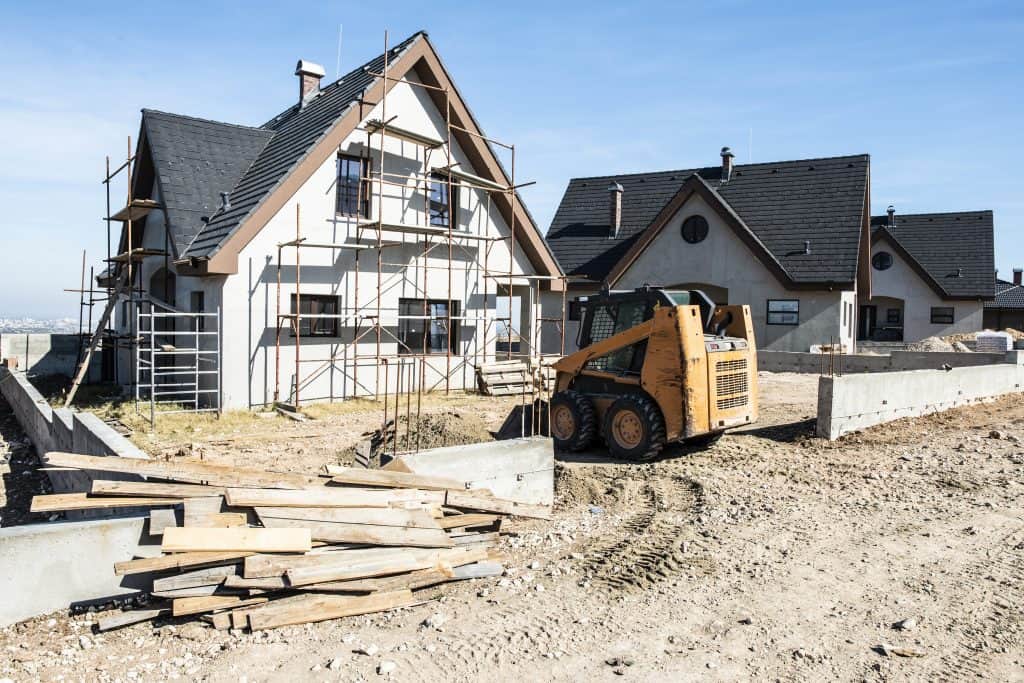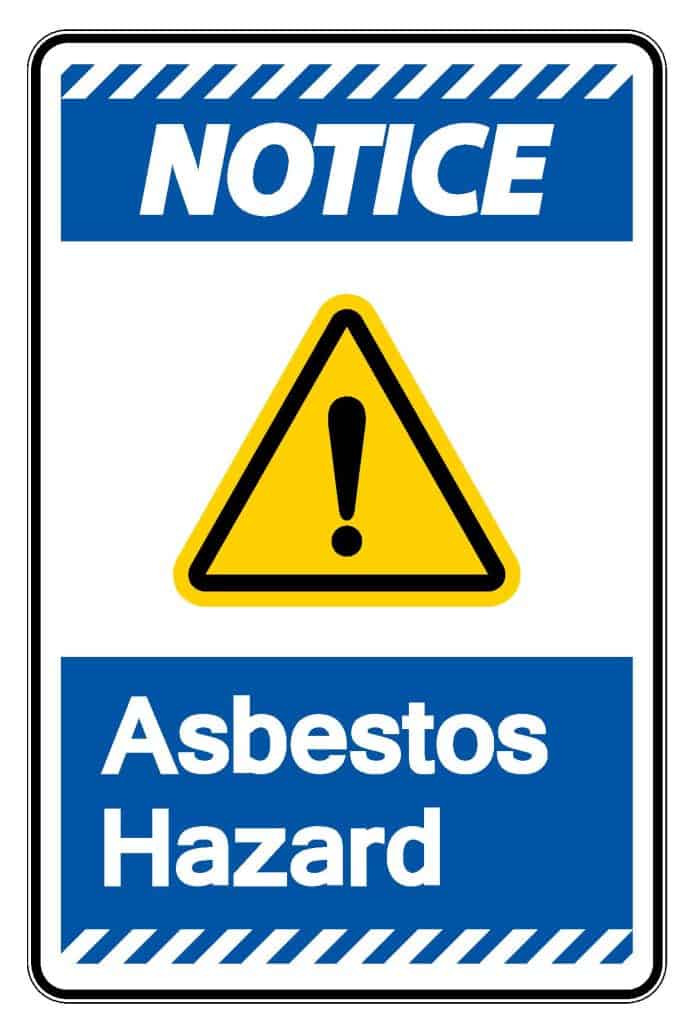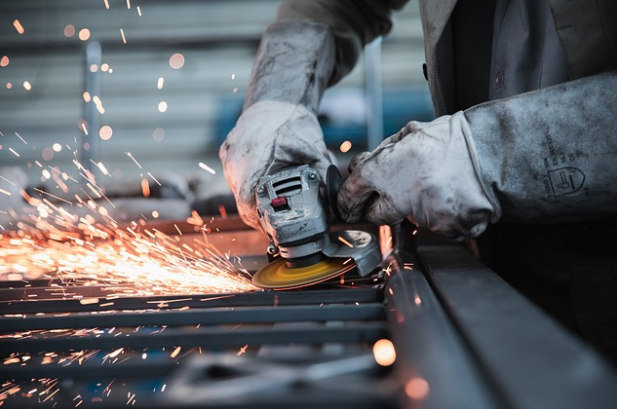Unfortunately, many have been in the dark. They don’t know about the many grave health risks of asbestos fibers and materials. Thus, it is important to know more about its pervasive nature and origins.
In this article, we embark on an exploration with you as we uncover where asbestos used to exist. We write this to help. We hope this knowledge will show how to avoid the dangers of asbestos. It will also help with other dangerous materials.
The Origins of Asbestos Materials
For the curious: did you know that asbestos’s history goes back thousands of years? Many of the names once used to identify it were also pretty peculiar.
These facts may seem irrelevant, but this gives us a deeper understanding regarding where asbestos material used to exist and where it is now, beyond vinyl floor tiles and heat-resistant fabrics!
Asbestos Origins: Names Associated With It
Asbestos was not always called as such, and there is an interesting history to back this up. Pliny the Elder once called it “live linen”. Pausanis dubbed it the “linen of Karpas”, based on where they saw it on the island of Cyprus.
Marco Polo and Travels
Many also associated asbestos with the salamander due to its being “fireproof” (i.e., thermal isolation and fireproof properties). Marco Polo himself, a renowned historian and traveler, wrote about it in his Milione—his travel journal from the early Medieval period.
Polo described it as a “substance” with the salamander’s nature because it remains incombustible even when thrown into fire or woven into clothing.
Benjamin Franklin and Mass Production
Centuries later, we also note acclaimed scientists such as Benjamin Franklin also referring to asbestos as “salamander cotton”.
This interesting piece of trivia gave birth to the trade name “Salamandra”, which a lot of mass producers utilized in the creation of the very first thermo-resistant mattresses, and even in some wood-burning stoves then.
Ernst Baader and the Rise of Diseases
Moving forward in the 1960s, an occupational specialist by the name of Ernst Baader called asbestos “Bergflachs-lunge”, which he associated with a new form of pneumoconiosis that literally translates into “mountain linen lung”.
All of these humble beginnings seem to foreshadow what would be the many dangers of asbestos exposure to people’s lungs and what would come out to be asbestos-related conditions like mesothelioma and lung disease, afflicting many people – due to the release of fibers into the air through asbestos products and asbestos exposure.
Asbestos Origins: Its Many Locations Across the Years
Now that we know the names by which historians and academics call asbestos, we take a look at its locations and origins.
19th-Century Asbestos
Dating back to the 19th century, commercial asbestos was prevalent in places like Russia, Canada, and Italy, particularly between 1866-1890. Australia and South Africa followed as asbestos repositories between the two major World Wars.
Soon after, Canada also gained access to it.
Late 18th-Century Asbestos
By the late 18th century, South Africa led amphibole (a type of asbestos) production and in the 1930s, Australia. It was only in 1992 when amosite production ceased; asbestos enjoyed the perks of production for almost eighty years in the Pengue mine.
Finland was also a location origin for anthophyllite asbestos; it only stopped producing asbestos after fifty years of activity, back in 1975, when reports of the dangers of airborne fibers surfaced. Crocidolite mining also happened in Australia and stopped about fifty years ago.
Asbestos already existed as far back in 2500 B.C. in modern-day Finland. They mixed clay with asbestos fibers, resulting in the formation of stronger pots and ceramic utensils; they also utilized patching compounds and used it in thin lining, ceiling tiles, coal furnaces, door gaskets, steam pipes, and other friction products.
In China and Greece, asbestos was used as a textile. Can you imagine that this happened as far back as 1000 to 1500 B.C.E.?
Asbestos Origins: Commercial Use Across the Decades
Beyond where asbestos used to be mined and produced, we also delve deep into knowing where the material is found based on commercial use and versatility.
It all began through professional-trained, mass production of goods – whether containing asbestos or using asbestos material as a whole – beginning as textiles in Anglo-Saxon countries and in Italy.
The very first type of asbestos to be used at a widescale and industrial level was actually crocidolite asbestos. This first happened at the United Kingdom and in South Africa; in 1918, its use in fraction materials like brake linings, brake pads, and clutches was first seen.
Then came asbestos cement, spearheaded by the USA, Austria, and Italy in the late 19th century. Tracing back to 1882, we find asbestos use in insulation materials rather than hemp usage, and in 1931, even materials like spray-on asbestos were developed in Great Britain.
By the 1950s, one can find asbestos already in almost any aspect of everyday life, in asbestos-containing products like shoes, wicks, cigarette filters, fake logs for gas fires, more insulation, and in artificial snow used in film sets and Christmas decorations.
It was only in 1970 when the peak of asbestos production began to stop and when governments started to limit access and remove asbestos due to reports surrounding prolonged exposure and improper handling; many an environmental protection agency also called for the ban.
This constant cessation of operations stabilized up to the early 2000s, with 2015 asbestos production dropping to an all-time low.
Asbestos Today: Where is Asbestos Found?
Beyond tracing the history, it is also important to know the specific sources of asbestos – what are the asbestos-containing materials that release asbestos fibers and which are culprits for asbestos exposure and other asbestos-related concerns.
Did you know that the modern era of asbestos began in 1965, in England? The Asbestosis Research Council began espousing the use of a membrane filter method, which was used for asbestos testing (especially for inspecting fibers), and in checking any asbestos material as well as other building materials (e.g., floor tiles, construction materials) for traces of microscopic asbestos fibers.
The Modern Era: Specific Sources of Asbestos Material Across the Years
Let’s take a look at some specific sources of asbestos and where is asbestos found. An example of asbestos-containing products is what we know as ‘spray on use’.
This was prevalent in the UK’s asbestos materials, which later banned crocidolite due to exposure risk and dangers of microscopic fibers; other countries and an environmental protection agency followed suit.
Asbestos exposure has also been an issue linked to asbestos-related construction materials and other sources, particularly in automotive parts (e.g., car brakes), construction (e.g., vinyl sheet flooring, popcorn ceilings), industrial equipment (e.g., steam pipes coated), textiles, insulation, and even in soil and rock.
In this era, the two major sources are automotive parts and construction.
Automotive Parts
In modern times, asbestos was used in various automotive parts for its heat resistance and durability, particularly in brake and clutch components. Brake pads and linings, clutch facings, and door gaskets within automotive systems were sources of asbestos.
In brake systems, asbestos was often incorporated into brake pads and linings to improve friction and heat dissipation properties, thereby enhancing braking performance. Asbestos-containing clutch facings provided the necessary friction and wear resistance for smooth operation.
Gaskets and seals in engines and exhaust systems also contained asbestos to withstand high temperatures and pressure. While regulations and industry practices have reduced the use of asbestos in automotive parts, older vehicles and certain aftermarket products may still contain asbestos, posing risks of exposure during maintenance or repair activities.
Therefore, careful handling and proper disposal of automotive components suspected to contain asbestos are essential to mitigate any health hazards.
Construction
In modern-day construction, asbestos can still exist in various building materials, particularly in structures built before the 1980s when its use was more prevalent.
Common sources of asbestos in construction include insulation materials such as asbestos-containing pipe insulation and attic insulation, as well as roofing materials like asbestos-containing cement sheets or shingles.
Flooring materials such as vinyl tiles and linoleum may also contain asbestos, along with cement products including corrugated sheets and pipes.
While regulations have reduced asbestos use in construction, older buildings may still harbor asbestos-containing materials, necessitating careful assessment and management during renovation or demolition to prevent fiber release and potential health risks to occupants and workers.
Finding Asbestos: What’s in Store for the Future
Knowing the various sources of asbestos material not just today but also in the past helps us understand what its future effects for us are.
It is key to note what the health hazards and possible repercussions for the general environment are, as what asbestos abatement professionals and many an environmental protection agency have called for.
Asbestos Testing
Knowledge of asbestos sources clearly helps in asbestos testing.
Normally, the first step is to do a visual inspection, where someone qualified – an asbestos professional or home inspector, usually linked to the Consumer Product Safety Commission – is tasked to identify asbestos and check materials and other materials, as well as structural parts (e.g., vinyl floor tiles, roofing shingles, and other types of floor tiles).
Afterward, they collect samples of suspected materials (i.e., ‘may contain asbestos’, which are handled properly and subject to analysis in an accredited lab.
Great caution is utilized in handling these suspected asbestos products, so as not to release fibers and to prevent exposure to asbestos.
Air Monitoring
We know where we can find them (e.g., heat-resistant fabrics, building materials, friction products, brake pads, and home insulation). Another way to prevent asbestos exposure is air monitoring. This has been common in calls to remove asbestos.
The American Cancer Society supports these calls. They also urge close observation of any source that may contain asbestos.
Getting air samples is crucial. They help assess asbestos fiber levels. This also helps with job safety. It is like a geological survey.
Risk Mitigation
Lastly, at the end of the day, the best thing that we can do regarding asbestos is to handle risk mitigation.
Those who have been exposed to asbestos will agree that vigilance against any lung disease and other asbestos-related diseases, or release of its fibers into the air, is pivotal.
Beyond just knowing where one may find them, regular testing and targeted mitigation strategies will help.
Regulatory compliance will also help, too, including proper occupational safety for many workers. In the long run, we can avoid asbestos exposure by avoiding asbestos products and exposure.
You can join an environmental protection agency or not. But, what’s more important is not to use asbestos products or materials. Otherwise, a home dangerous to one can be a danger to many.
Asbestos in the Home

- Caulking
- Ceiling tiles
- Cement Sheeting
- Concrete
- Duct Connectors
- Electrical Breakers
- Electrical Components
- Felt Wiring
- Insulation
- Millboard
- Plasters
- Roof Shingles
- Sheetrock
- Siding
- Textured Popcorn Ceilings
- Vinyl Floor Tiles
Asbestos exposure is hazardous and can lead to asbestos-related illnesses. It is crucial that you handle the material carefully. If you mishandle asbestos, it can release fibers into the air. These fibers can be inhaled and may become stuck in internal organs, including the lungs, heart, and abdomen. If you suspect asbestos in a building, you can hire a professional to come, take samples, and test for it. If you know asbestos is present, you should hire an abatement professional to remove it safely. An abatement professional is a highly trained individual who gained their credentials by receiving training and accreditation. These professionals follow both federal and state laws while working.
The EPA recommends that the general public does not attempt to handle asbestos due to how dangerous exposure can be.

Asbestos in Buildings
-
- Academy Buildings
- Actuaries Buildings
- Administrative Buildings
- Adobe Brick Buildings
- Aerospace Buildings
- Agricultural Buildings
- Air Station Buildings
- Air Traffic Control Buildings
- Aircraft Buildings
- Airport Buildings
- Aluminum Plant Buildings
- Ammunition Depot Buildings
- Amphitheater Buildings
- Amusement Park Buildings
- Animal Control Buildings
- Animal Shelter Buildings
- Apartment Buildings
- Aqueduct Buildings
- Arcade Buildings
- Architectural Buildings
- Arena Buildings
- Armory Buildings
- Art Gallery Buildings
- Asbestos Plant Buildings
- Asphalt Plant Buildings
- Assembly Hall Buildings
- Assembly Plant Buildings
- Asylum Buildings
- Athletic Club Buildings
- Atomic Energy Buildings
- Auditorium Buildings
- Auto Shop Buildings
- Aviation Buildings
- Bakery Buildings
- Bank Buildings
- Barber Shop Buildings
- Barge Buildings
- Barn Buildings
- Barrack Buildings
- Bath House Buildings
- Battery Plant Buildings
- Bearing Plant Buildings
- Benzene Storage Buildings
- Beverage Plant Buildings
- Bicycle Plant Buildings
- Biomass Buildings
- Biosphere Buildings
- Blacksmith Buildings
- Boarding House Buildings
- Boat House Buildings
- Boat Repair Ship Buildings
- Boiler Plant Buildings
- Boilerhouse Buildings
- Bonding Plant Buildings
- Botanical Garden Buildings
- Bottlehouse Buildings
- Bottling Plant Buildings
- Bowling Alley Buildings
- Box Plant Buildings
- Boys Club Buildings
- Boys Farm Buildings
- Brake Plant Buildings
- Brass Plant Buildings
- Brewery Buildings
- Brick Yard Buildings
- Bridge Underpass Buildings
- Bunker Buildings
- Bunkhouse Buildings
- Bus Station Buildings
- Bus Terminal Buildings
- Cabin Buildings
- Cabinet Plant Buildings
- Cable Plant Buildings
- Cafeteria Buildings
- Campus Buildings
- Candy Plant Buildings
- Canning Plant Buildings
- Car Dealership Buildings
- Car Wash Buildings
- Carpet Plant Buildings
- Casino Buildings
- Cathedral Buildings
- Cement Plant Buildings
- Cemetary Buildings
- Charhouse Buildings
- Chemical Plant Buildings
- Childrens Homes
- Church Buildings
- City Buildings
- Civic Center Buildings
- Classroom Buildings
- Clay Plant Buildings
- Clinic Buildings
- Clothing Plant Buildings
- Clubhouse Buildings
- Clutch Assembly Plant Buildings
- Coal Plant Buildings
- Coffee Shop Buildings
- Coliseum Buildings
- College Buildings
- Commercial Buildings
- Community Center Buildings
- Community Housing Buildings
- Concert Hall Buildings
- Concrete Buildings
- Condominium Buildings
- Conference Center Buildings
- Conservatory Buildings
- Construction Buildings
- Convalescent Homes
- Convent Buildings
- Convention Center Buildings
- Copper Plant Buildings
- Cotton Plant Buildings
- Country Club Buildings
- County Buildings
- Courthouse Buildings
- Crane Plant Buildings
- Credit Union Buildings
- Crushing Plant Buildings
- Dairy Buildings
- Dam Buildings
- Dancing Room Buildings
- Day Care Buildings
- Demolition Plant Buildings
- Dental Supply Buildings
- Dentistry Buildings
- Department Store Buildings
- Depot Buildings
- Detention Center Buildings
- Diesel Plant Buildings
- Dining Hall Buildings
- Dining Room Buildings
- Dispensary Buildings
- Disposal Facility Buildings
- Distilling Buildings
- Distribution Plant Buildings
- Dock Yard Buildings
- Dome Buildings
- Dormitory Buildings
- Dredge Buildings
- Drug Store Buildings
- Dry Cleaners Buildings
- Elderly Housing Buildings
- Electric Company Buildings
- Electric Plant Buildings
- Electronic Buildings
- Elementary School Buildings
- Elevator Plant Buildings
- Energy Plant Buildings
- Equestrian Farm Buildings
- Equipment Yard Buildings
- Explosive Plant Buildings
- FAA Buildings
- Factory Buildings
- Farm Buildings
- Federal Buildings
- Fertilizer Plant Buildings
- Fiberglass Buildings
- Field House Buildings
- Field Office Buildings
- Fire Station Buildings
- Firehouse Buildings
- Firework Plant Buildings
- Fishery Buildings
- Food Plant Buildings
- Foundry Buildings
- Freight House Buildings
- Freight Shipping Buildings
- Fuel Depot Buildings
- Funeral Home Buildings
- Furnace Plant Buildings
- Furniture Buildings
- Garage Buildings
- Garage Plant Buildings
- Gas Company Buildings
- Gas Station Buildings
- Gasket Plant Buildings
- Girls Club Buildings
- Glass Plant Buildings
- Golf Course Buildings
- Government Buildings
- Grain Buildings
- Grandstand Buildings
- Granite Yard Buildings
- Grapple Yard Buildings
- Greenhouse Buildings
- Grocery Store Buildings
- Guest Room Buildings
- Gymnasium Buildings
- Hair Salon Buildings
- Hall of Records Buildings
- Hangar Buildings
- Harbor Buildings
- Hardware Store Buildings
- Health Center Buildings
- Helicopter Plant Buildings
- High Rise Buildings
- High School Buildings
- Highway Department Buildings
- Historical Buildings
- Hockey Rink Buildings
- Hospital Buildings
- Hotel Buildings
- Housing Complex Buildings
- Housing Tract Buildings
- Hydrostation
- Ice House Buildings
- Ice Skating Rink Buildings
- Ice Storage Buildings
- Incinerator Buildings
- Industrial Buildings
- Industrial Park Buildings
- Infirmatory Buildings
- Inn Buildings
- Institute Buildings
- Institutional Buildings
- Insulation Plant Buildings
- Insurance Buildings
- Iron Yard Buildings
- Jail Buildings
- Job Site Buildings
- Junk Yard Buildings
- Juvenile Hall Buildings
- Laboratory Buildings
- Land Companies
- Landfill Facility Buildings
- Landmark Buildings
- Laundry Buildings
- Lecture Hall Buildings
- Legion Post Buildings
- Library Buildings
- Lighthouse Buildings
- Loan Buildings
- Locomotive Repair Buildings
- Lodge Buildings
- Logging Plant Buildings
- Lumber Yard Buildings
- Lunatic Asylum Buildings
- Machine Shop Buildings
- Mall Buildings
- Malthouse Buildings
- Mansion Buildings
- Manufacturing Buildings
- Marble Yard Workers
- Marina Buildings
- Market Buildings
- Mass Transit Buildings
- Mausoleum Buildings
- Meat Packing Buildings
- Medical Center Buildings
- Melt House Buildings
- Memorial Park Buildings
- Mental Hospital Buildings
- Mess Hall Buildings
- Metal Buildings
- Metal Plant Buildings
- Military Base Buildings
- Military Housing Buildings
- Mill Buildings
- Mining Buildings
- Missile Site Buildings
- Mobile Home Buildings
- Mold Yard Buildings
- Monastery Buildings
- Monument Building
- Mortuary Buildings
- Motel Buildings
- Motorcycle Facility Buildings
- Municipal Buildings
- Museum Buildings
- Music Hall Buildings
- Music Room Buildings
- National Park Buildings
- Navy Yard Buildings
- Newspaper Buildings
- Night Club Buildings
- Nuclear Power Plant Buildings
- Nuclear Reactor Buildings
- Nursing Home Buildings
- Observatory Buildings
- Office Buildings
- Office Complex Buildings
- Offshore Platform Buildings
- Oil Refinery Buildings
- Oil Storage Buildings
- Old Buildings
- Opera House Buildings
- Orphans Home Buildings
- Packaging Plant Buildings
- Paint Plant Buildings
- Paper Mill Buildings
- Parking Lot Buildings
- Pavillion Buildings
- Penetentiary Buildings
- Penthouse Buildings
- Pesticide Plant Buildings
- Petroleum Plant Buildings
- Pharmaceutical Plant Buildings
- Pipe Supply Buildings
- Pipeline Buildings
- Plant Buildings
- Plantation Buildings
- Playhouse Buildings
- Plaza Center Buildings
- Plumbing Supply Buildings
- Police Station Buildings
- Post Office Buildings
- Poultry Buildings
- Power Plant Buildings
- Powerhouse Buildings
- Print Shop Buildings
- Prison Buildings
- Production Plant Buildings
- Propane Storage Buildings
- Protectory Buildings
- Public Buildings
- Public Housing Buildings
- Pumping Station Buildings
- Racetrack Buildings
- Raceway Buildings
- Racquet Club Buildings
- Radar Buildings
- Radio School Buildings
- Rail Yard Buildings
- Railroad Buildings
- Railroad Station Buildings
- Railroad Terminal Buildings
- Railway Buildings
- Real Estate Buildings
- Reclamation Center Buildings
- Recreation House Buildings
- Rectory Buildings
- Recycling Plant Buildings
- Refinery Buildings
- Reformatory Buildings
- Refrigerated Buildings
- Refrigeration Buildings
- Refuse Dump Buildings
- Rehab Center Buildings
- Research Lab Buildings
- Reservation Buildings
- Reservoir Buildings
- Residence Hall Buildings
- Residential Buildings
- Residential Home Buildings
- Resort Buildings
- Rest Home Buildings
- Restaurant Buildings
- Retardation Center Buildings
- Retirement Home Buildings
- Roadhouse Buildings
- Rock Quarry Buildings
- Roofing Plant Buildings
- Rooming House Buildings
- Roundhouse Buildings
- Rubber Plant Buildings
- Rubbish Plant Buildings
- Salt Plant Buildings
- Salvage Yard Buildings
- Sanatorium Buildings
- Sand Gravel Plant Buildings
- Sanitarium Buildings
- Sanitation Buildings
- Savings Buildings
- School Buildings
- Science Buildings
- Scrap Yard Buildings
- Seminary Buildings
- Service Station Buildings
- Sewage Buildings
- Sheet Metal Plant Buildings
- Shipyard Buildings
- Shop Facility Buildings
- Shopping Center Buildings
- Shopping Mall Buildings
- Silo Buildings
- Ski Resort Buildings
- Skyscraper Buildings
- Sludge Mill Buildings
- Slurry Plant Buildings
- Smelter Buildings
- Soft Drink Plant Buildings
- Soldiers Home Buildings
- Sorority House Buildings
- Space Center Buildings
- Sports Arena Buildings
- Stadium Buildings
- State Buildings
- Steakhouse Buildings
- Steam Plant Buildings
- Steel Mill Buildings
- Stock Yard Buildings
- Storage Buildings
- Store Front Buildings
- Storeroom Buildings
- Substation Buildings
- Sugar Plant Buildings
- Sulphur Plant Buildings
- Supermarket Buildings
- Symphony Hall Buildings
- Synagogue Buildings
- Taconite Plant Buildings
- Talc Plant Buildings
- Tank Plant Buildings
- Tanker Plant Buildings
- Tar Plant Buildings
- Taxi Cab Buildings
- Tea Room Buildings
- Telephone Company Buildings
- Television Studio Buildings
- Temple Buildings
- Tenement House Buildings
- Textile Mill Buildings
- Theater Buildings
- Tile Plant Buildings
- Tire Plant Buildings
- Tobacco Plant Buildings
- Toll Booth Buildings
- Tower Buildings
- Town Hall Buildings
- Townhouse Buildings
- Toy Plant Buildings
- Tractor Plant Buildings
- Trade School Buildings
- Traffic Control Buildings
- Trailer Plant Buildings
- Train Station Buildings
- Train Terminal Buildings
- Training Facility Buildings
- Tram Buildings
- Transportation Buildings
- Trash Disposal Buildings
- Trolley Shop Buildings
- Truck Plant Buildings
- Trucking Buildings
- Tube Shop Buildings
- Tunnel Buildings
- Turbine Buildings
- Underground Buildings
- University Buildings
- Utility Buildings
- Utility House Buildings
- Utility Plant Buildings
- Valve Plant Buildings
- Van Plant Buildings
- Vehicle Plant Buildings
- Vessel Shop Buildings
- Veterans Administration Buildings
- Veterans Hospital Buildings
- Village Housing Buildings
- Vineyard Buildings
- Vinyl Plant Buildings
- Warehouse Buildings
- Wastewater Plant Buildings
- Water Park Buildings
- Water Plant Buildings
- Water Works Buildings
- Weaving Plant Buildings
- Weigh Station Buildings
- Welding Yard Buildings
- Wharf Station Buildings
- Widows Home Buildings
- Window Plant Buildings
- Wire Plant Buildings
- Wood Plant Buildings
- Wool Plant Buildings
- World Trade Center Buildings
- Wrecking Yard Buildings
- X-Ray Room Buildings
- Yacht Yard Buildings
- Yard Facility Buildings
- Yarn Facility Buildings
- YMCA Buildings
- Youth Center Buildings
- Zoo Buildings






